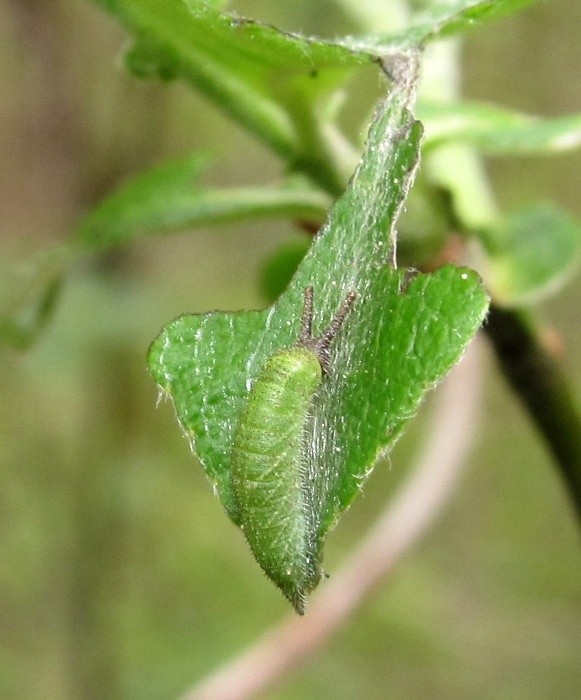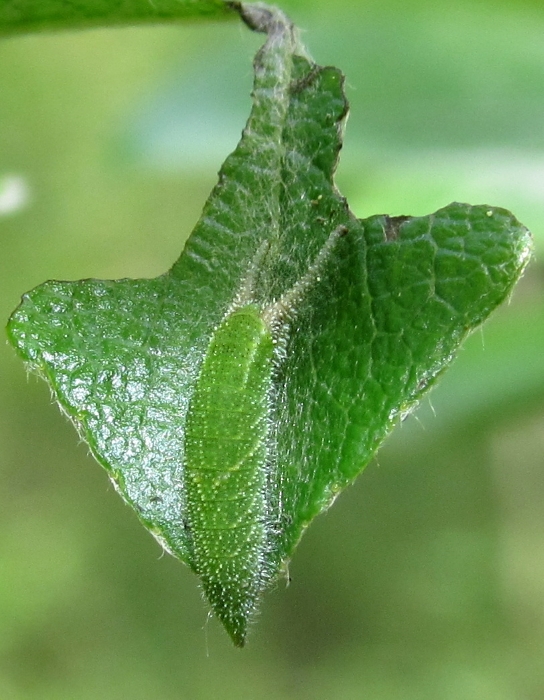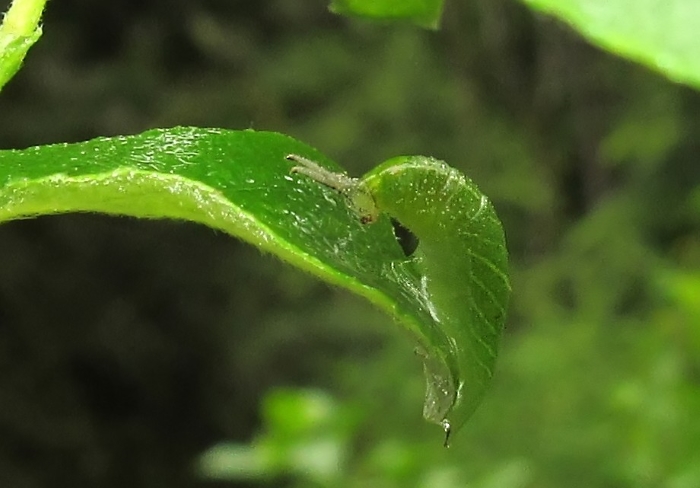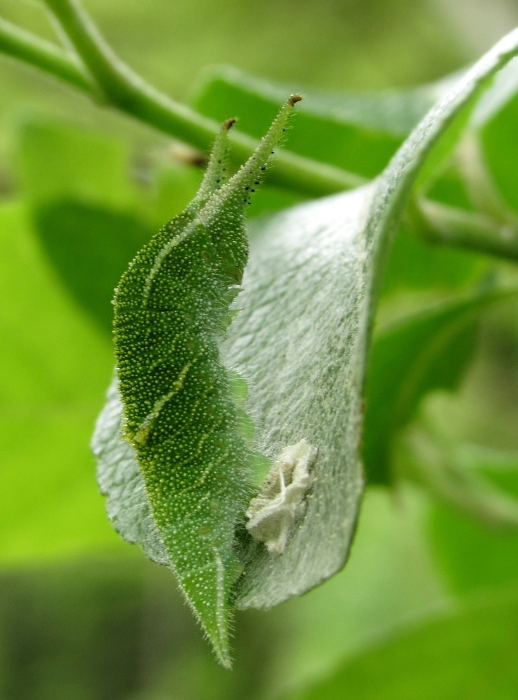The caterpillar I named Yudhiṣṭhira was tiny when I found him earlier this year and I suggested he was 2nd instar. Mark ('iriscientist') agreed. He shed his skin for the first time in 2015 between 9th and 11th May. He is now laid up again for a second moult, though still only about 12-13 mm long - a typical size for the 3rd to 4th instar moult. It is not possible that this is a 4th to 5th instar moult, at which stage the larva is typically 24-25 mm long.
Unfortunately, I have suffered a high loss of larvae over the last couple of weeks. The other two I believed might have hibernated in 2nd instar have both disappeared. A third, that I am unsure about, is still alive, but I haven't logged all her moults as she's a bit off the track and when I have little time I miss out a daily check. I will try and follow Yudhiṣṭhira through his next moults but there is absolutely no doubt now that he did hibernate in 2nd instar. The evidence I have gathered over the last few years suggests this is not at all uncommon in Switzerland.
Yudhiṣṭhira on 9th May, still laid up:
Yudhiṣṭhira on 11th May, newly 3rd instar:
Yudhiṣṭhira today, 21st May, laid up for his next moult:
About 200m away in the same woods is Agni, who moulted into 5th instar on 16th May:
He was still there when I checked today ...
Guy




2 comments:
I have not recorded 2nd instar larvae overwintering, or even occurring later than (I think) the second week of Sept in the wild. This is from a sample size of >500 autumn larvae. However, I find telling 2nd and 3rd instar larvae apart difficult, and all things are possible with this the best of all possible butterflies...
Interesting. I'm relatively new to this game and have only followed a total of about 40 larvae, including those discovered in the spring. Of these, I have evidence beyond doubt of two spending the winter in 2nd instar and less conclusive (but quite strong) evidence of others doing so. Clearly, things are different in Switzerland and the UK. I've noticed from your postings, Matt, that your larvae are well synchronised, and from the blog as a whole that the UK emperor season is rather short. By contrast, I have seen male emperors well into September for both of the last two years. Our flight season is longer and the larval stages evidently more staggered.
Guy
Post a Comment